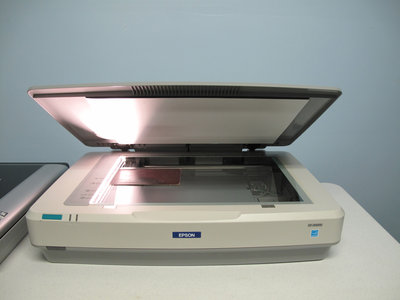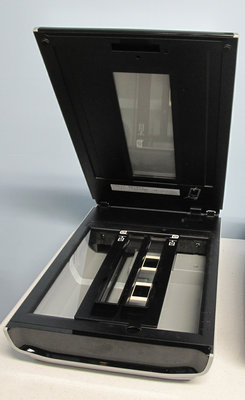
Digitization Without Fears
Scanning
Scanning means capturing the surface of a physical object in order to reproduce an electronic image. This can be done by using a digital camera or a special scanner. In our lab we have a flatbed scanner and a microfilm scanner. Scanners move a finely focused beam of light over a surface on a physical object. The light falls on highly sensitive devices that are capable of converting it into electrical charges, or electrons. Now the computer can understand the information transmitted by the scanner. Special software installed on the computer creates an electronic file, which contains information about the physical object. This file can be viewed as an image on a computer monitor.
We use various techniques for scanning different types of physical materials. To scan flat objects (such as photographs) we use a flatbed scanner. A photograph is placed between the glass plate and the cover. It takes about one minute to scan a large picture and save its image on the computer.
Slides are transparent objects, therefore they require a different type of scanner. Our Canon 9000F scanner is equipped with a special frame that can hold slides. The scanning procedure is similar to the one we use for the flatbed scanner, but scanning time is higher, approximately two minutes per scan.
Flatbed scanners are not suitable for scanning rare books or bound manuscripts with a fragile spine, because they can be seriously damaged or destroyed. To capture the image of books, we use a digital camera. To prevent books from getting damaged, they are placed in a simple cradle, which allows us to keep them open at any angle.
When we borrow physical materials from our donors, we return them as soon as scanning is completed.



